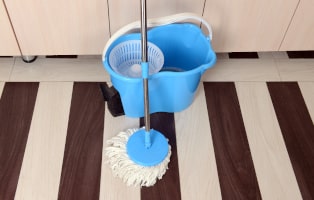Read our highly informative guide on how to clean windows if you want to know the best techniques!
Let’s say the sun shines brightly down on your humble abode. However, you’re not going to get to enjoy the full effects of its rejuvenating power if your windows are covered in a thick film of dirt, dust, and bird droppings. If you want to soak up every bit of the sun’s life-giving radiance, you’re going to need to regularly clean your windows.
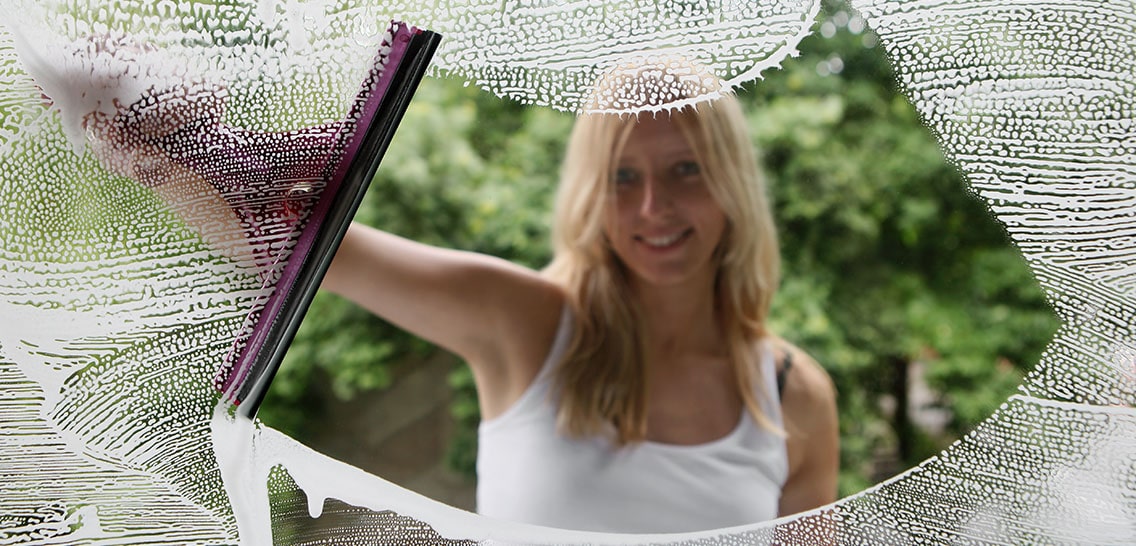
Crystal clear windows allow more natural light to filter in your home, which can help you feel more connected to the cosmos. However, for those who don’t know the proper techniques, it can be incredibly challenging to try and figure out how to get your windows spotless without ending up with a lot of streaks.
Window Washing Equipment
Get yourself some top-notch equipment if you want your window cleaning to be as good as the pros. Get it online or at home centers like Lowe’s. Here’s what you’ll need:
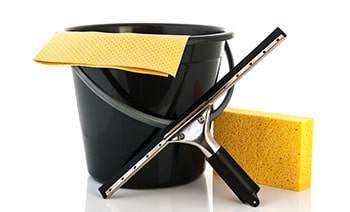
- 10-inch squeegee;
- Scrubber or a sponge;
- 5-gallon bucket;
- Dish soap or white vinegar;
- Lint-free rags or small towels;
- Ladder (if your windows are too high to comfortably reach).
Make Your Own Window Cleaning Solution
Many commercial products promise to give you a “streak-free shine.” If these products contain ammonia or alcohol, that’s probably not true. Homemade solutions are usually better at not leaving streaks.
The best homemade window cleaning solution is made by mixing two gallons of water and a teaspoon of dishwashing liquid. You can also combine one part distilled vinegar with 10 parts water. White vinegar is acidic, so it’s excellent at breaking down the streaky film that can accumulate on windows.
Cleaning Interior Windows
Use a soft microfiber rag to clean your interior windows. In warm weather, it’s best to use cool water. Sub-zero temperatures aren’t ideal for cleaning windows. However, if you have no other choice, add enough windshield washing fluid so the water doesn’t freeze on the glass.
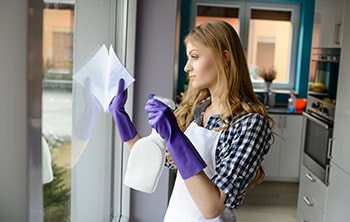
- Before spraying the solution, wipe down the window with a lint-free microfiber cloth or paper towel to remove the dust.
- Spray the entire surface with the cleaner. Avoid getting any solution on the wood, fiberglass, or vinyl frames because it might discolor the finish.
- Use a second rag to dry your window as thoroughly as possible using a Z-shaped motion. Do this quickly to prevent streaks.
- Repeat the process if streaks remain.
Keep a rag in your pocket to quickly clean up soapy water that dribbles on the woodwork. Use another clean rag to wipe the perimeter of the glass. Make sure you wipe up excess water along the window’s bottom edge and clean the non-glass parts of the window.
Filth can build up on the frame, causing stains or damage. It can also get inside the tracks or other components, making your window stick or stop working altogether.
Cleaning Exterior Windows
Outside windows are usually much dirtier than inside windows. This means you’ll probably have to apply more elbow grease.

- Start by rinsing the windows thoroughly with a garden hose. Then, spray the glass with the cleaning solution of your choice.
- Wipe the window dry with a clean, rubber-bladed squeegee. Tilt the squeegee so that only the corner of it touches the window. Then, beginning at the top corner of the glass, clean a narrow strip from top to bottom on one side. Make sure the top of the squeegee always stays in contact with the top edge of the glass.
- Wipe the blade with a clean rag to remove dirt and excess water.
- Start again with the top of the squeegee overlapping the previous stroke about two inches. Pull the squeegee across the window at an angle to direct excess water downwards. Wipe and repeat.
Changing a Squeegee Blade
Make sure your squeegee blade is sharp as a tack. Get more mileage out of a blade by reversing it to expose a fresh edge. If you need to change a blade, here’s how to do it:
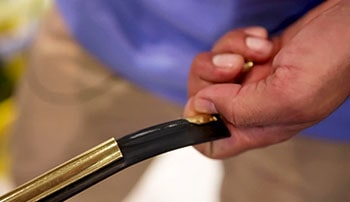
- Remove the old blade.
- Grab the end of the new blade and stretch it out, so the metal clip is exposed.
- Slide the clip off, then pull the blade from the opposite end. Sometimes blades don’t have clips. Blades without them are usually held together by a couple of screws and a clamp on the handle.
- Install the new blade by sliding it into the metal channel. If you need to, cut the end of the blade to leave only 1/8 to 3/16 inches protruding from the channel.
- Stretch it and reinstall the metal clip.
Removing Stubborn Window Stains
Saturate stubborn stains thoroughly with vinegar and water and let stand for several minutes before wiping off. You can also use a soft scrubby sponge to remove stains. However, don’t use steel wool or harsh scrubbing cloths.
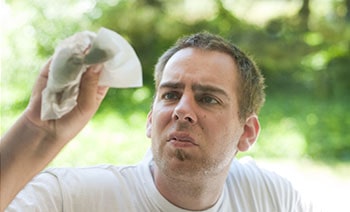
Sometimes, you’ll see mineral stains on windows, which is common in hard water areas. For this problem, it’s best to use a commercial formula specially devised for this purpose. Make sure it can remove calcium, lime, and rust stains.
Remove paint splotches and labels with a razor blade. Make sure it’s in a holder. Always use a new blade because dull ones can scratch glass. Wet the window and push the blade across. Rinse the blade to avoid trapping debris underneath that could leave nasty scratches on the glass.
Remove sticky tree pitch or bird droppings with a fine nylon scrub pad. Wet the glass first and rub the pad in an inconspicuous area to make sure you’re not scratching the glass.
Final Thoughts
So there you have it—a few timeless tips to get your windows looking crystal clear. Just go lightly, or else the window you so painstakingly wanted to clean will end up shattering into a million glittering fragments.
Washing windows can be a laborious and time-intensive task if you’re still doing it the old-fashioned way. If you want to make it an effortless process, check out which window washing robots we recommend.
Then, you can sit back and relax while your robot friend goes to town!

Mop Tips & Tricks

